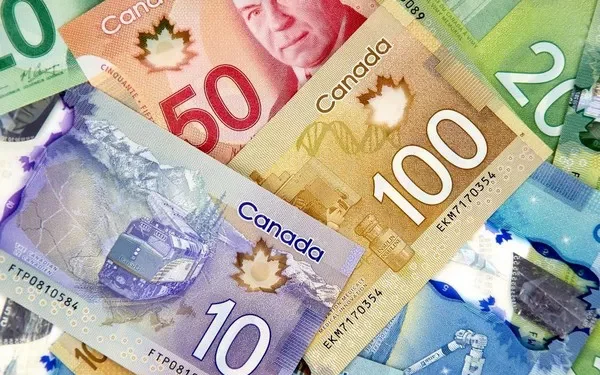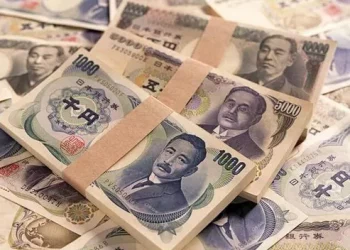The exchange rate between different currencies fluctuates regularly based on various economic, geopolitical, and financial factors. If you are a traveler, investor, or business owner dealing with international payments, it is important to understand how currency exchange works, especially when converting between major currencies. In this article, we will specifically focus on the Canadian Dollar (CAD) and the Indian Rupee (INR), two prominent currencies in the global market. Our primary goal is to explore the question: How much is 20,000 CAD to INR?
This article will not only provide the current exchange rate but will also discuss factors influencing currency exchange rates, how to convert currencies, and how to get the best rates for currency exchange. By the end, you will have a better understanding of the exchange rate dynamics between CAD and INR, and the steps you can take to ensure that you’re getting the best value when converting currencies.
Understanding Currency Conversion: A Brief Overview
Currency conversion is the process of exchanging one country’s currency for another. The value of one currency relative to another is determined by the exchange rate, which fluctuates based on supply and demand in the foreign exchange (Forex) market. Several factors impact these fluctuations, including interest rates, inflation rates, political stability, and global events.
When you are asking how much 20,000 CAD is in INR, you are essentially asking for the conversion rate between the Canadian Dollar and the Indian Rupee. The exchange rate is the value of one currency expressed in terms of another currency. For example, if the exchange rate between CAD and INR is 1 CAD = 60 INR, then 20,000 CAD would be worth 1,200,000 INR.
Factors Influencing the Exchange Rate Between CAD and INR
Before diving into the current exchange rate and conversion of 20,000 CAD to INR, it is crucial to understand the factors that affect the value of CAD relative to INR. These factors include:
Interest Rates: Central banks, like the Bank of Canada and the Reserve Bank of India, set interest rates, which play a significant role in determining the value of their respective currencies. Higher interest rates typically attract foreign investment, leading to an increase in demand for the currency, thus strengthening its value.
Inflation: Inflation is the rate at which the general level of prices for goods and services rises, eroding purchasing power. Countries with lower inflation rates tend to see their currency appreciate because the purchasing power remains strong relative to other nations with higher inflation.
Political Stability: Political stability and effective governance are key factors that impact investor confidence in a currency. For instance, if there is political instability in India, foreign investors may withdraw their investments, leading to a depreciation of INR against foreign currencies like CAD.
Economic Performance: The economic performance of a country affects its currency. Strong economic growth, as reflected in GDP growth, low unemployment, and a robust manufacturing sector, can result in a stronger currency. Conversely, weak economic performance can lead to a currency devaluation.
Trade Balance: A country’s trade balance, which is the difference between its exports and imports, also impacts its currency. A trade surplus (where a country exports more than it imports) often strengthens the local currency, while a trade deficit can weaken it.
Global Market Trends: Exchange rates are also affected by global market trends. Commodity prices, oil prices, and other international events can create ripples in currency markets, influencing the exchange rate between CAD and INR.
Exchange Rate Fluctuations Between CAD and INR
The exchange rate between CAD and INR does not remain constant. It fluctuates daily based on the factors outlined above. For example, in times of economic uncertainty, investors may flock to safe-haven currencies like the US Dollar (USD), which could lead to a depreciation of both the CAD and INR relative to the USD. Alternatively, if the Canadian economy is performing strongly and attracting foreign investment, the Canadian Dollar might appreciate, increasing its value against other currencies, including INR.
Given that exchange rates fluctuate, it is important to check the real-time rate before making any significant transactions or investments. Online currency converters or platforms like XE, OANDA, and others can provide live exchange rates.
How Much is 20,000 CAD to INR Today?
As of the most recent data, the exchange rate for 1 CAD to INR is approximately 60-61 INR. This rate can vary slightly depending on where you are exchanging your money and whether you’re using a retail rate or interbank rate. Using an approximate rate of 1 CAD = 60.5 INR, we can calculate how much 20,000 CAD would be worth in INR.
For example:
20,000 CAD×60.5 INR=1,210,000 INR
So, 20,000 CAD is approximately 1,210,000 INR. However, this is just an estimation, as exchange rates can vary slightly between banks, currency exchange services, and online platforms due to transaction fees or markups.
Different Methods for Converting CAD to INR
There are various ways to convert Canadian Dollars to Indian Rupees, depending on your needs. Each method comes with its own set of benefits, drawbacks, and costs. Let’s explore the most common methods of currency conversion.
Currency Exchange Services: Currency exchange services, including those found at airports, banks, and currency exchange outlets, are one of the most common ways to convert CAD to INR. While they are easily accessible, these services typically charge higher fees and offer less favorable rates compared to online services. It is advisable to shop around and compare rates to ensure you get the best deal.
Banks and Financial Institutions: Many banks provide currency exchange services, especially for their account holders. While the exchange rate at banks may not always be the most competitive, it can be a reliable and secure option for converting large amounts of money. Additionally, banks offer a more secure and regulated environment for handling currency exchange transactions.
Online Currency Converters: Online platforms, such as XE, OANDA, and Wise (formerly TransferWise), provide real-time exchange rates and enable users to convert currencies at competitive rates. Many of these platforms charge lower fees compared to traditional banks or currency exchange services, and they are particularly useful for smaller transactions or international money transfers.
Forex Brokers and Dealers: Forex brokers and dealers can offer more flexible options for converting CAD to INR, especially for those engaging in frequent or large-scale currency trades. These brokers may offer more competitive rates but also involve a higher level of risk and require more sophisticated knowledge of the foreign exchange market.
ATMs Abroad: If you are traveling from Canada to India, withdrawing INR from an ATM in India can be a convenient option. However, it is important to note that your bank may charge foreign transaction fees, and the exchange rate offered may not be as competitive as other methods.
Factors to Consider When Converting CAD to INR
When converting Canadian Dollars to Indian Rupees, there are several factors you should consider to ensure you are getting the best deal. Here are some key things to keep in mind:
Exchange Rate Spreads: The exchange rate spread refers to the difference between the buying and selling rates. Currency exchange providers often offer a lower buying rate (when you exchange your CAD for INR) and a higher selling rate (when you convert INR back to CAD). Be sure to check both rates and calculate the effective rate you’re getting.
Transaction Fees and Charges: Some currency exchange providers charge additional fees or commissions for their services. These can add up quickly, so make sure to check all fees and costs involved in the transaction. Online platforms like Wise often offer lower fees compared to traditional banks or exchange outlets.
Amount Being Exchanged: If you are converting a large sum of money, it may be worth negotiating the exchange rate or considering a specialized foreign exchange service. Some providers offer more competitive rates for larger transactions.
Timing: Timing your conversion is crucial, as exchange rates fluctuate regularly. If you are looking to get the best value for your CAD, it may be worth monitoring exchange rates over time to wait for a more favorable rate.
Payment Method: The payment method you choose can also affect the exchange rate you receive. Some services may offer better rates for bank transfers compared to credit card payments, which often come with higher fees.
How to Save Money on Currency Conversion
To maximize the value you get when converting CAD to INR, here are some tips that could help you save money:
Use Online Currency Converters: Online platforms often offer better rates and lower fees than traditional banks or exchange outlets.
Avoid Airport Exchanges: Currency exchange services at airports typically offer less favorable rates.
Compare Rates: Always compare rates from multiple sources before deciding where to convert your money.
Consider Transferring Funds Digitally: If you are sending money to India, using digital money transfer services like Wise, Remitly, or Revolut may help you save on fees and get a better rate.
Conclusion
In summary, if you are looking to convert 20,000 CAD to INR, based on an exchange rate of 1 CAD = 60.5 INR, you can expect to receive approximately 1,210,000 INR. However, this rate can fluctuate due to various factors, such as market conditions, economic data, and geopolitical events.
When exchanging currencies, it is important to consider factors such as the exchange rate, fees, and transaction costs to ensure that you get the best value for your money. Whether you are traveling, investing, or conducting business, understanding the dynamics of currency conversion between CAD and INR will help you make informed decisions and save money in the process.
Remember, the Forex market is dynamic, and it’s always advisable to stay updated on the latest rates and trends to make the most of your currency exchanges.
Related Topics:


























